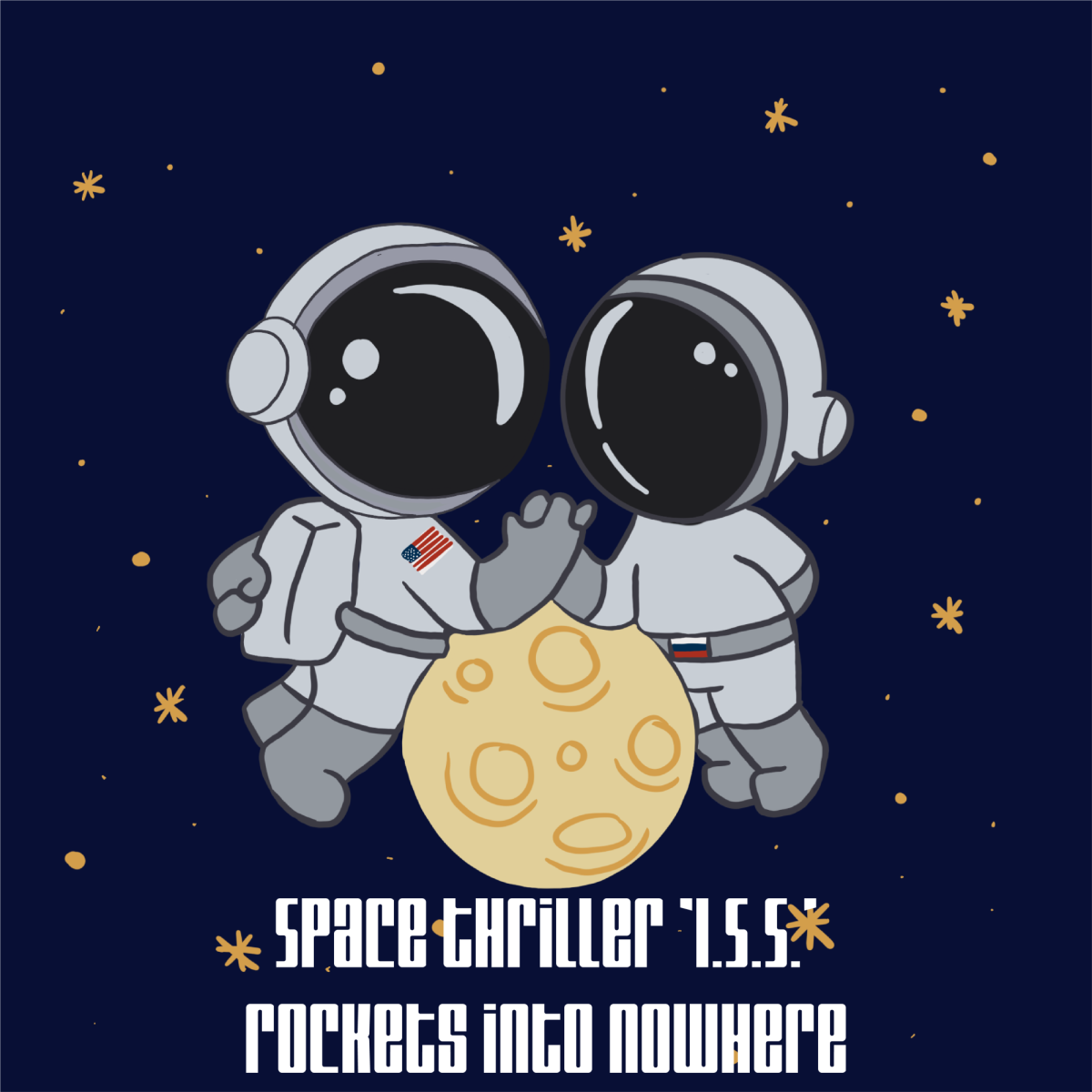It’s an interesting moment for “I.S.S.” to come out, considering the recent announcement from the Bulletin of the Atomic Scientists that the Doomsday Clock is ticking at 90 seconds to midnight.
The Bulletin is composed of atomic scientists tasked with determining how close the end of the world might be in the form of a clock-shaped metaphor. In their January press release, factors influencing the minute number of minutes the Clock has until striking an apocalyptic midnight included A.I., warfare and the ongoing nuclear struggle between the United States of America and the Russian Federation.
In “I.S.S.,” midnight is struck. The film is set aboard the International Space Station as six spacefarers –– three American astronauts and three Russian cosmonauts –– enjoy professional camaraderie as scientists and colleagues. The sextet is determined to transcend any tensions that may exist between their two nations on Earth: discussing politics is banned, learning both languages is encouraged and research spaces are shared. Unfortunately, the bond of the I.S.S. band is tested after the crew observes nuclear warfare erupting on the planet below.
As the surface of the Blue Planet turns fiery red, both teams of crew members receive their orders: take control of the I.S.S. by any means necessary.
It’s a great setup and features great set-dressing. The space station is decked out with all the nobs, buttons and flashing lights one would expect. Zero-gravity is employed in interesting ways. There are many fun facts about life in space –– did you know that astronauts float in their sleep unless they zip themselves into a secure sleeping bag?
However, even if “I.S.S.” shoots for the moon, it doesn’t land anywhere near a star-making performance by any of the six performers.
“West Side Story” Oscar-winner Ariana DeBose headlines the film, joining actors like “Game of Thrones” alum Pilou Asbæk and multi-laureate television and film star Chris Messina. Unfortunately, DeBose brings little of the fierce energy she has previously exhibited to “I.S.S.” Her character functions as the audience stand-in, new to the space station and thus subjected to becoming the exposition engine. DeBose predominantly comes across as confused.
The other actors aren’t much better. John Gallagher Jr.’s performance as a morally-gray American astronaut is more annoying than aerobic, though it would be a stretch to imagine him as a legitimate threat to the Russian side of the conflict. Masha Mashkova, Costa Ronin and Asbæk are devoid of chemistry themselves as the cosmonaut team, but not as bad as the supposed romance between Mashkova and Messina’s characters.
Part of the problem is the script. Even if the performances were superstar supernovas rather than charisma blackholes, the script fails to take off after its explosive premise, burning up in the atmosphere of its confined setting. The film is advertised as a thriller, yet there are few thrills to be found aboard the I.S.S.
If audiences are looking for an outer space adventure, “I.S.S.” is the last frontier they should be looking at. NASA’s Twitter feed is more entertaining.
Rating: 2/5 Yosefs





MuChao • Feb 3, 2024 at 7:54 am
Quick note: the Bulletin of Atomic Scientists is not just composed of “atomic scientists” (atomic itself being a term that’s no longer used and dates back the founding of the group in 1945.)
The Science and Security Board, which is just one aspect of the group and the one tasked with the yearly “Doomsday Clock” report, is comprised of experts in various fields of science, technology, security, etc. including expertise in disruptive technologies, climate change, and nuclear weapons to name a few.